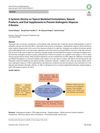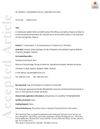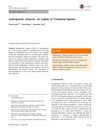Which is minoxidil variations is more effective? Minoxidil 8/23/2024
The user has been using topical minoxidil 5% with finasteride 0.1% for two years and is considering whether to continue with this or try new minoxidil variations available in the market. They are seeking advice on which option might be more effective.
View this post in the Community →
Similar Community Posts Join
6 / 1000+ resultscommunity 6 months on biotin + minoxidil
A user shared a 6-month progress picture showing improvement in hair loss using biotin and minoxidil. They also mentioned dealing with stress, diet issues, and seborrheic dermatitis.
community 60 days on topical minoxidil 5% + 0.1% finasteride.
The user is happy with hair regrowth after 60 days using topical minoxidil 5% and finasteride 0.1%, along with a dermaroller. They report no significant side effects and plan to continue treatment for a year.
community 6 months on topical Minoxidil + Finasteride
User has been using topical Minoxidil (5%) and Finasteride (0.1%) for 5-6 months, along with a dermaroller. No side effects reported, but user notes weight gain without change in diet or exercise.
community 5 months Minoxidil+Fin progress
The conversation is about a user's 5-month progress using topical Minoxidil (5%) and Finasteride (0.1%) twice daily, along with derma stamping, improved Vitamin D levels, and increased protein intake for hair regrowth. The user is considering dutasteride if progress plateaus and uses a sulfate and paraben-free shampoo.
community Does this look like progress? 1 month difference
A user shared their hair loss treatment journey, using topical Minoxidil, Finasteride, Tretinoin, and Stemoxydine, and asked for feedback on progress after one month. Responses varied, with some users suggesting patience and consistency, while others noted minimal visible change.
community I have tried many treatments but it's getting worse. 23M.
A 23-year-old male experiencing worsening hair loss has tried topical Minoxidil, Finasteride, Progesterone, Hydrocortisone butyrate, and Ketoconazole. He is considering switching to oral Finasteride due to concerns about side effects and lack of improvement.
Related Research
6 / 1000+ results
research A Systematic Review on Topical Marketed Formulations, Natural Products, and Oral Supplements to Prevent Androgenic Alopecia
Various treatments, including FDA-approved drugs, natural products, and oral supplements, can help with hair loss, but a patient's medical history and potential allergies should be considered when choosing a treatment.

research A Randomized, Double-Blind Controlled Study of the Efficacy and Safety of Topical Solution of 0.25% Finasteride Admixed with 3% Minoxidil vs. 3% Minoxidil Solution in the Treatment of Male Androgenetic Alopecia
Finasteride and minoxidil mix works better for hair growth than minoxidil alone, with similar safety.

research Androgenetic Alopecia: An Update Of Treatment Options
Minoxidil is the only FDA-approved topical drug for treating male or female pattern hair loss, and other medications like finasteride and dutasteride can also increase hair growth.

research A Review of the Treatment of Male Pattern Hair Loss
Finasteride and minoxidil work best together for hair loss.

research Clinical Trials and Hair Loss
Many treatments for hair loss show potential, but more testing is needed to confirm their effectiveness. Only minoxidil for women and minoxidil and finasteride for men are FDA approved.
research Comparison of Microneedling With Platelet Rich Plasma Versus Minoxidil (5%) Plus Finasteride (0.1%) Topical Therapy in Androgenetic Alopecia: A Randomised Clinical Study
Microneedling with PRP is as effective and safe as minoxidil+finasteride for treating hair loss.